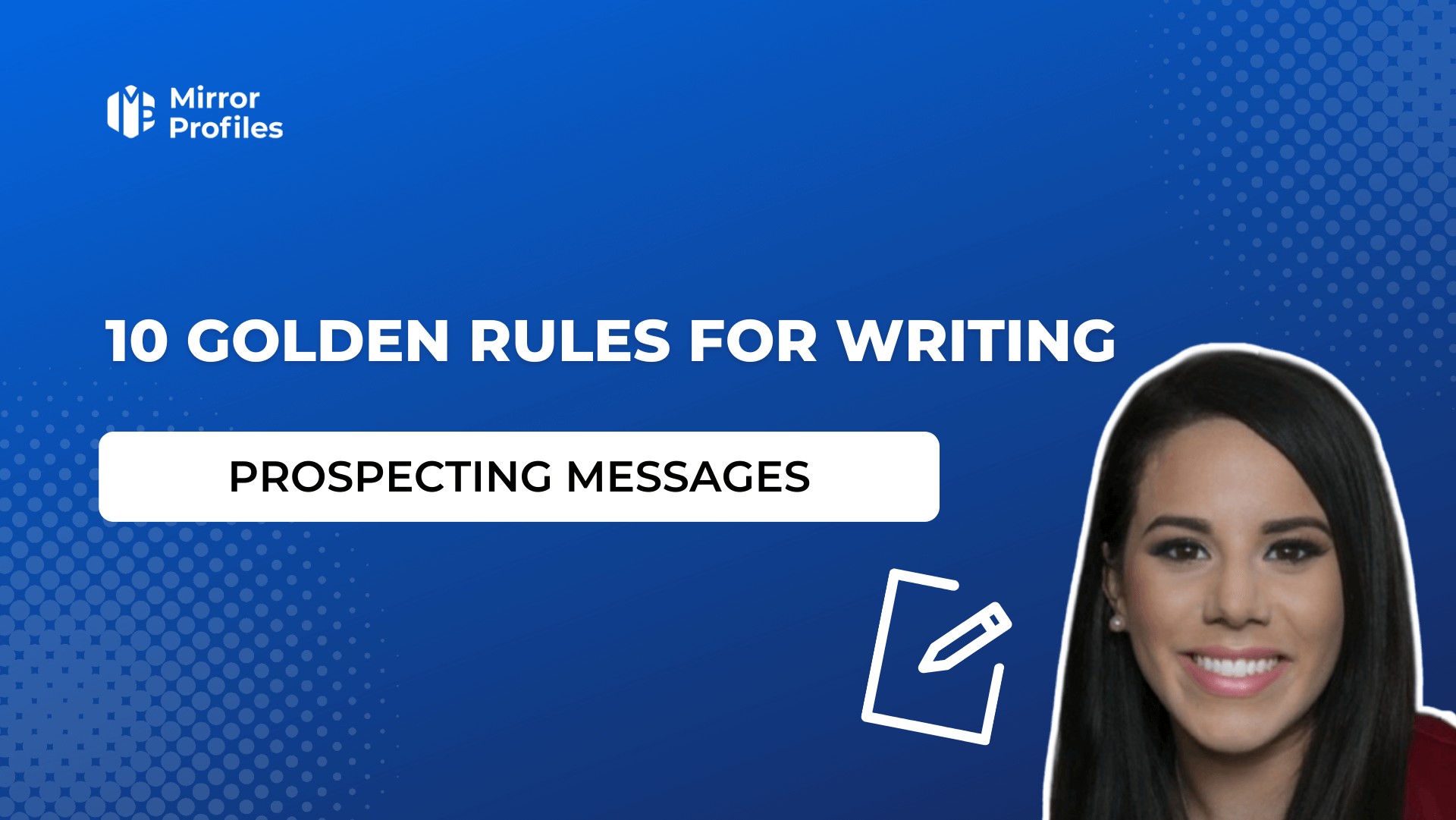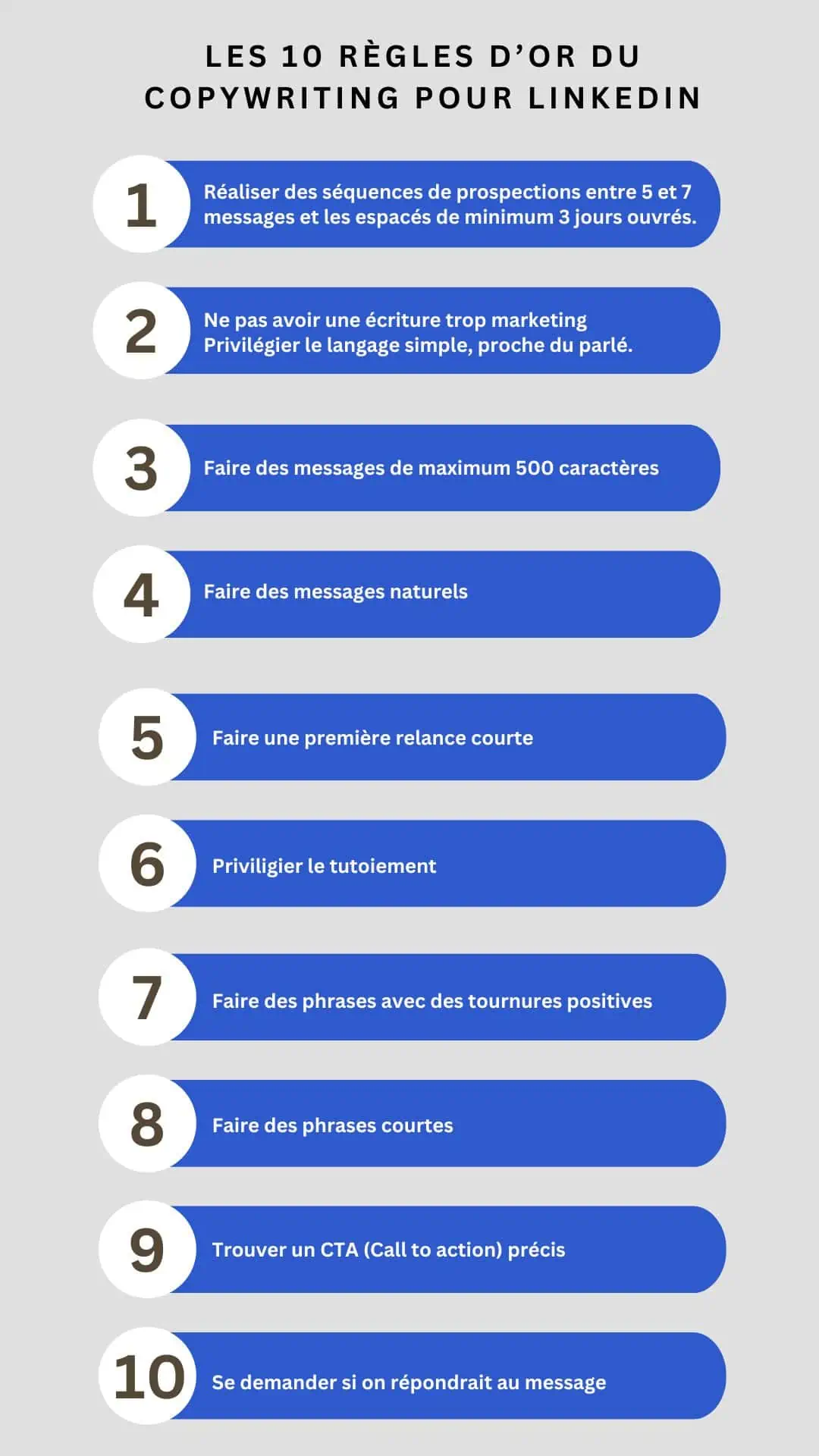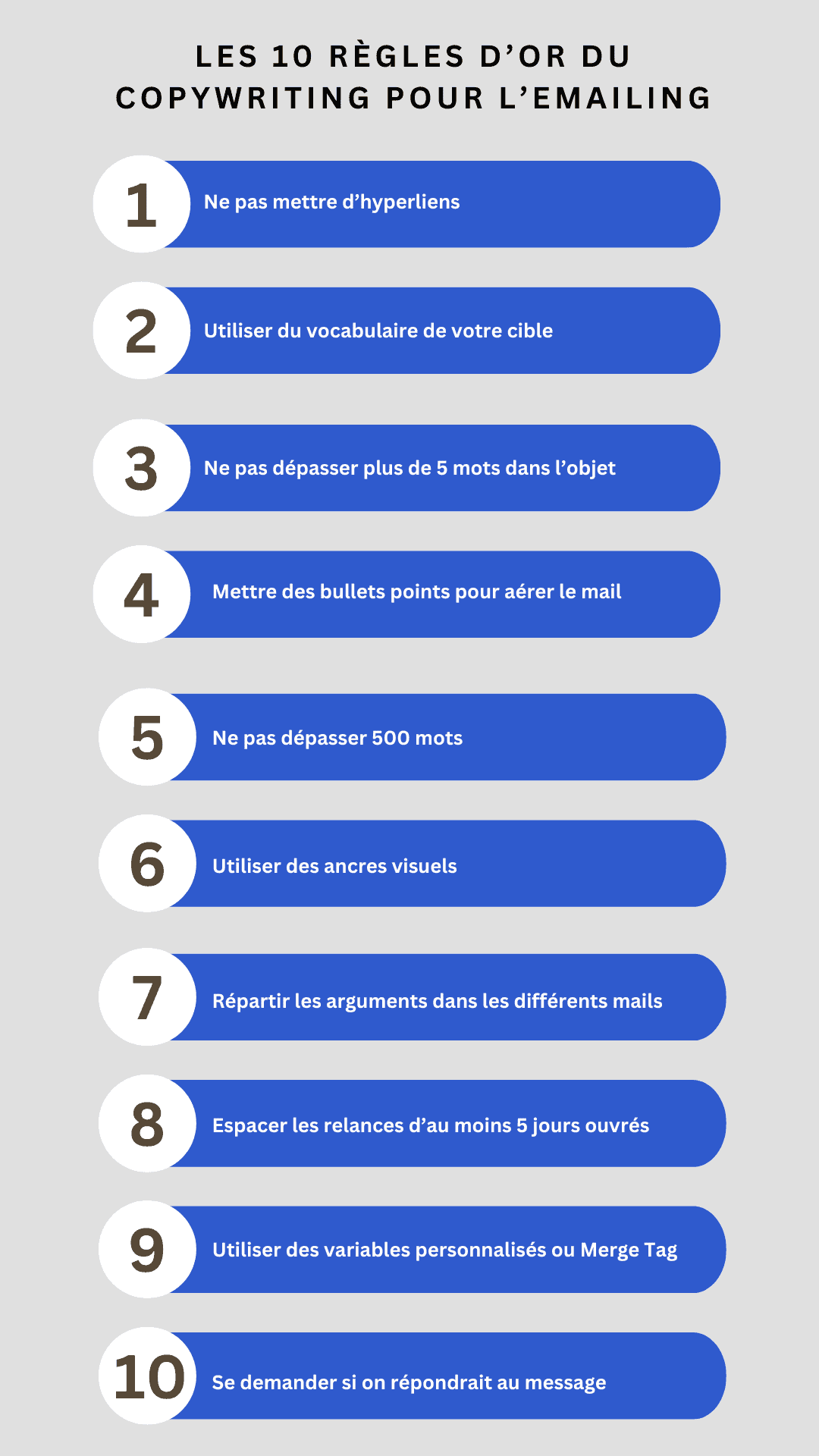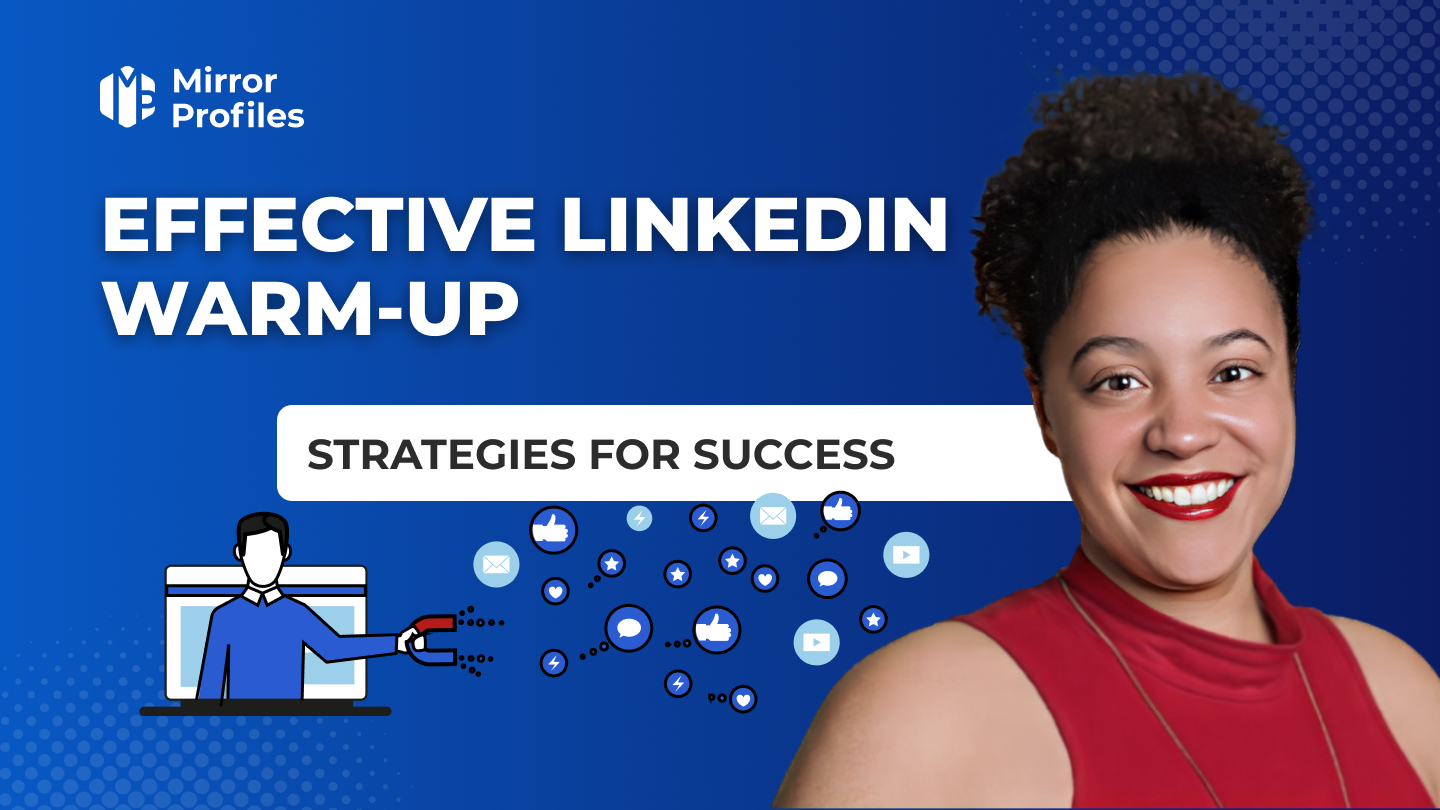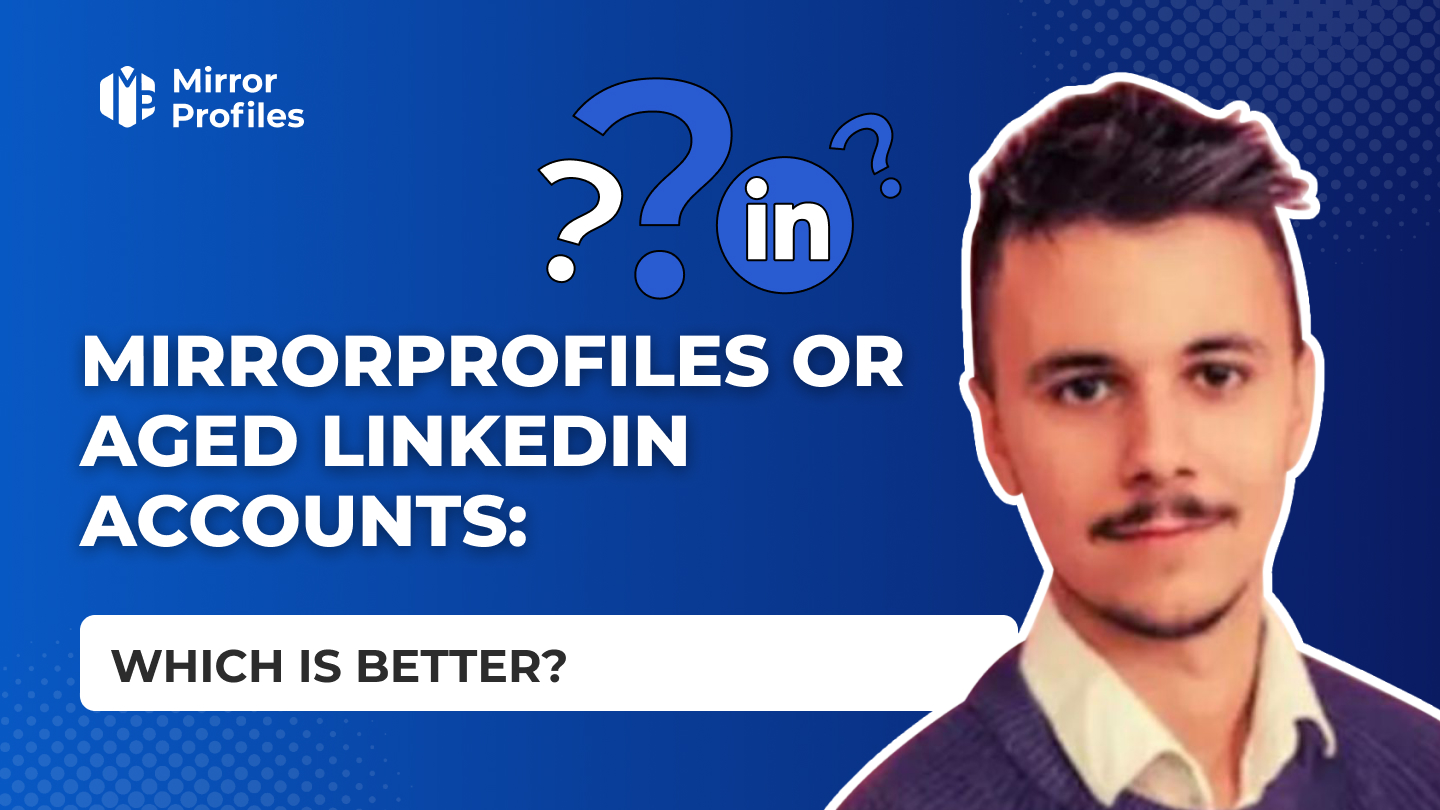Outbound prospecting needs good copywriting to perform. Whether it’s prospecting for leads or candidates. Thanks to our MirrorProfiles tool and in collaboration with Stepward, we were able to analyze the messages with the highest return rates. Instead of giving you ready-made templates that won’t work for your business, we’ve decided to bring you the essential points to follow when writing prospecting messages, whether on Linkedin or for emailing.
- Thanks to MirrorProfiles, we have deployed 5 Linkedin accounts
- We personalized them as if they were students
- These 5 Linkedin accounts contacted its database simply by asking, as part of their Master’s degree, what brand their machine was.
- The marketing objective is used to qualify or trigger 1 action on the part of our prospect: webinar, white paper reading, etc.
- The Sales objective is to increase the number of appointments
- The Recruitment objective is used to increase the number of candidate interviews.
Make an appointment and let's take stock together!
The 10 golden rules of copywriting for Linkedin
Here’s a 10-point guide to perfecting your prospecting messages, applicable to both customer and candidate searches. First of all, it is now forbidden to include external links or websites directly in your Linkedin prospecting messages. You must first ask your prospect for permission. If not, Linkedin detects this as spam and may ban the account.
1) Build prospecting sequences of 5 to 7 messages, spaced at least 3 working days apart.
2) Avoid an overly commercial style and opt for simple, direct language.
For example, instead of saying, “At Pavageau, we’re convinced that offering goodies bearing your establishment’s logo is a great way to build customer loyalty while providing a unique experience,” say, “Personalized goodies are a great way to build customer loyalty. Everyone loves to receive gifts, and it’s one of the best strategies for encouraging word-of-mouth.”
3) Keep your messages concise: no more than 500 characters. You’ll see, it goes very fast.
4) Your messages should sound natural, remembering that LinkedIn is a social network. So avoid adding your signature and polite phrases like “Nice day” or “Yours sincerely”, which can give the impression that the conversation is over.
5) Your first follow-up message should be brief, and can include a short, relevant argument. For example: “{{firstName}}, did you have a chance to read my last message?”
6) Although it may seem counter-intuitive, on a social network, it’s best to be on first-name terms with your interlocutor. English speakers needn’t worry about this subtlety of the French language!
7) Use positive phrasing in your sentences. Instead of saying “I must not be at the right time, you must be busy”, prefer “When you have a moment”.
8) Avoid using bulleted lists on LinkedIn, as they don’t suit the network’s format and make your message longer. Use short sentences.
9) Be sure to include a clear and precise call to action (CTA). Avoid formulas such as “Are you interested?”
10) Finally, and most importantly, before you finalize your message, ask yourself if you would respond if you were in the recipient’s shoes.
Additional tip: Including the AIDA technique (Attention, Interest, Desire, Action) can energize your messages and encourage engagement. Grab attention with a surprising question or statistic, then create interest and desire before inviting action.
By following these tips, you’ll optimize the effectiveness of your prospecting messages on LinkedIn.
As part of your company’s acquisition strategy, you need to contact your prospects through a variety of channels. Linkedin is the 1st, the most ROI-rich, but then you need to upgrade your databases to contact all the prospects who haven’t responded to you via emailing.
Additional tip: Add an interactive dimension to your messages by incorporating visual elements such as gifs or emojis where appropriate. This can capture attention and foster a more relaxed, engaging atmosphere in your communications.
Make an appointment and let's take stock together!
The 10 golden rules of copywriting for email marketing
In the same way as for LinkedIn, here are 10 essential tips for writing your email prospecting messages, whether you’re looking to attract customers or candidates.
-
Avoid including hyperlinks in your emails for two reasons: recipients are increasingly wary of non-visible links, and email services such as G-suite may see this as a negative factor for your email deliverability.
-
Don’t use your professional jargon. Take the time to research and use your prospect’s specific vocabulary, so that you speak their language.
-
The subject of your email should not exceed 5 words. Avoid including emojis or questions, and make sure it looks like a message a colleague might send.
-
Unlike LinkedIn, don’t hesitate to use bulleted lists to structure your email.
-
Your emails should be no longer than 500 words to keep them concise and to the point.
-
Use striking visual elements to maximize the impact of your message. On average, a person spends 3 seconds reading an email and focuses primarily on :
- The first sentence
- The questions
- Items in bold
- Postscript (PS)
- The signature
Visual elements such as question marks, numbers, bold words and “PS” are particularly eye-catching.
-
Every email should bring value to its recipient, so don’t give away all your arguments in the first message.
-
Space your reminders at least 5 working days apart to avoid appearing insistent.
-
Use custom variables or merge tags. You can use more email addresses than on LinkedIn. Check out this article on automation tools to discover the “Merge Tags” available.
-
And finally, as with LinkedIn, the crucial question to ask yourself before finalizing your message is: if you received this prospecting message, would you respond?
By following these recommendations, you’ll optimize the effectiveness of your email prospecting campaigns.
In conclusion, outbound prospecting is an art that requires perfect mastery of copywriting, whether to attract leads or recruit new talent. Thanks to the collaboration between MirrorProfiles and Stepward, we were able to analyze in depth the messages generating the most engagement and responses. Rather than providing you with ready-made templates that aren’t adapted to your specific activity, we’ve chosen to share with you the fundamental principles to be respected when writing your prospecting messages, whether on LinkedIn or by email.
Outbound prospecting requires a thorough understanding of your audience, a well-defined strategy and impeccable execution. By taking into account the specifics of each communication channel and following the advice in this guide, you’ll be able to create powerful, personalized prospecting messages that will resonate with your prospects and generate concrete results.
Remember, the key to success lies in the relevance and personalization of your messages. Take the time to get to know your audience, understand their needs and expectations, and fine-tune your messages to make them as engaging and convincing as possible. With practice, attention to detail and a strategic approach, you’ll master the art of outbound prospecting and see your response rates and conversions improve significantly.
So put these tips into practice, refine your approach and start reaping the rewards of your outbound prospecting efforts today. Good luck and good sales!
FAQ
How can you effectively personalize a prospecting message to grab the prospect’s attention?
To effectively personalize a prospecting message and grab the prospect’s attention, it’s crucial to conduct prior research on both the person and the company. Use specific information found on the LinkedIn profile or company website to create a message that meets their personal needs and preferences. Mention their latest LinkedIn post, summarize the issues they raise and offer relevant solutions. Show enthusiasm and vocal variety on phone calls, and ask intelligent questions to engage the prospect authentically.
What are the best practices for writing a B2B prospecting email that gets appointments?
To write a B2B prospecting email that gets appointments, several best practices are essential: – Define the objective: Clarify what you want to get from the email, such as a meeting or a demo. – Personalize : Use segmentation to tailor your message to prospects’ needs and roles . – Clear and concise subject line: Avoid click traps and make sure the subject line inspires trust and attracts attention . – Engaging content : Highlight the value the prospect can receive and build a relationship of trust . – Clear call to action: Include CTAs to prompt the prospect to take action, such as booking an appointment . – Respect RGPD: Make sure you have the recipient’s permission before sending the email .
What questions should I ask in a prospecting email to engage the prospect in conversation?
In a prospecting email, it’s crucial to ask targeted questions to engage the prospect in a conversation. Here are some suggestions: – Interest and priority: “Is solving [problème spécifique] a priority for you right now?” – Subject knowledge: “How familiar are you with [sujet ou problème]?” – Current situation: “How are you currently managing [problème ou processus]?” – Personal connection: Mention specific content or information you’ve discovered about the prospect’s company, such as “I saw that your company recently published an article on [topic]. Can I take a minute to explain why this prompted me to contact you?” – Call to action: “Would it be possible to discuss this in more detail during a phone call?”
How can you combine different communication channels in a prospecting sequence to maximize efficiency?
To effectively combine different communication channels in a prospecting sequence, it’s crucial to follow several key steps: – Know your audience: Use data analysis tools to understand your prospects’ preferences, buying behaviors and interests. – Segment: Divide your prospects into distinct segments based on their preferences and behaviors to send relevant messages on appropriate channels. – Choosing channels: Select the most appropriate channels for each segment, such as telephone prospecting, e-mail marketing or social networks. – Channel integration: Ensure that all your communication channels are connected to deliver a consistent customer experience and reinforce interactions. – Personalization: Tailor your messages to your prospects’ needs and preferences to increase engagement and the likelihood of conversion . – Test and optimize: Test different combinations of channels and messages, measure performance and optimize your efforts accordingly .


